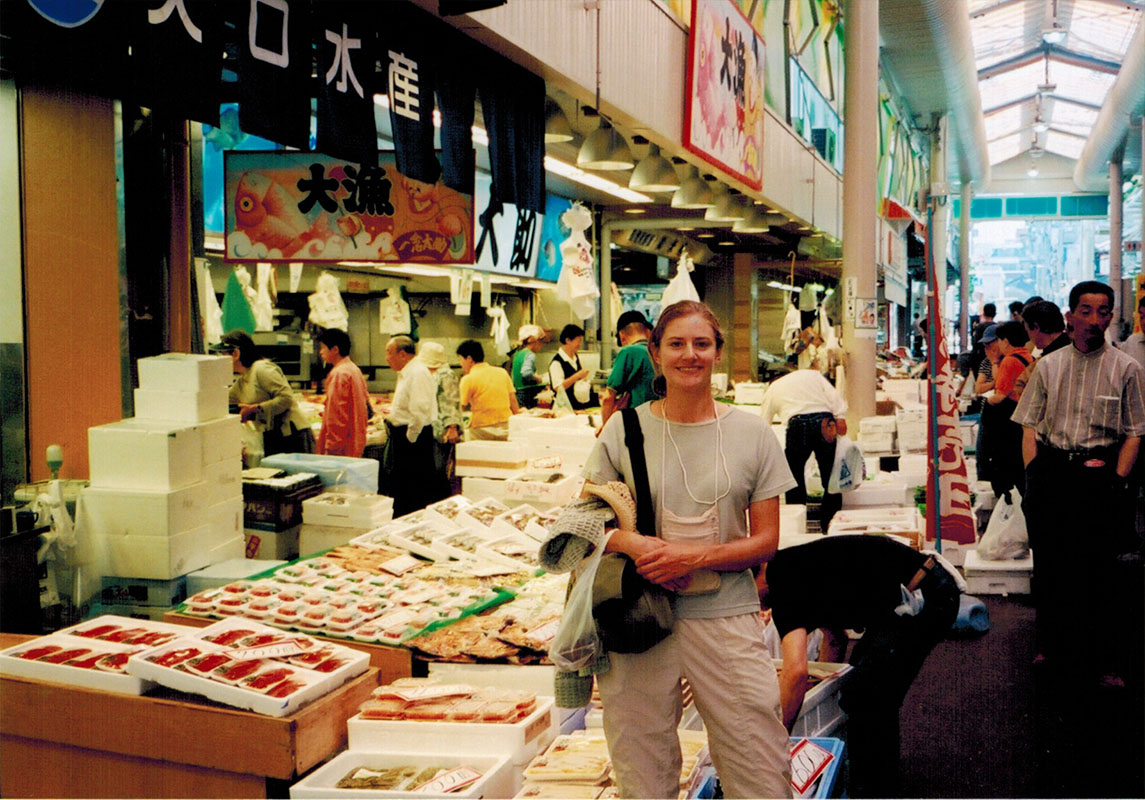
The birding trip had drawn to a close, and we hopped on the bullet train from Tokyo to Kanazawa, a small city on Honshu’s western coast. There was no need to take reading material for the journey because the view outside the train window was captivating once we left the sprawling city behind and got out into the countryside.
I was surprised to find that, despite the profusion of traditional architecture still remaining in the villages and the tendency towards uniformity in the Japanese culture, not everyone is afraid to stand out. You can find homes and shops painted purple, blue, pink, green, or yellow in a sea of otherwise taupe buildings. The other surprise was the housing density in rural areas. Instead of having a few scattered farmhouses surrounded by rice paddies, we passed miles of empty fields with no structures nearby and then found all the homes clustered together in little hamlets, packed in just as tightly as in the cities.
Many Japanese visit Kanazawa to see the “old” Japan, as the city survived World War II unharmed and has many historical sites of note. It’s also a prominent center for gold leaf production as well as arts, crafts and Noh theatre featuring elaborate costumes and traditionally performed only for samurai elite. I was eager to see a performance of Noh theatre, while Dennis preferred no theatre. He lucked out because the Kanazawa troupe was in rehearsals and had no stage productions going on when we were there.

We enjoyed wandering up and down narrow alleys in historic neighborhoods and made several stops at the Omicho market with its maze of narrow lanes crammed full of vendors selling an array of seafood, meats, produce, noodles and quite a few unidentifiable comestibles.
We also took a guided tour of the famed Ninja Temple with a young woman who spoke only a few words of English. She was very nice and did a great job of explaining (mostly in Japanese and pantomime) how the numerous trap doors, trick stairs, false floors and hidden entries worked. We visited a samurai house and a geisha house that had been turned into museums, but unfortunately all of the information was only in Japanese so we did quite a bit of guessing about what was in each place. The city’s historic sights seemed spread out on the map but were easily navigable either on foot or by a convenient public bus system.
One of the highlights of the city is Kenroku-en, reputed to be one of the country’s top three gardens. It was originally built as a stroll garden for Kanazawa Castle but was turned into a park for all to enjoy its ponds, meandering paths and abundance of trees and flowers. And it seems everyone in town, led by tour guides with bullhorns, was out enjoying it the day we went, but the garden was large enough to find a few quiet nooks here and there.
We thoroughly enjoyed Kanazawa but had train tickets and reservations for a stay in Kyoto, so we reluctantly moved on.
